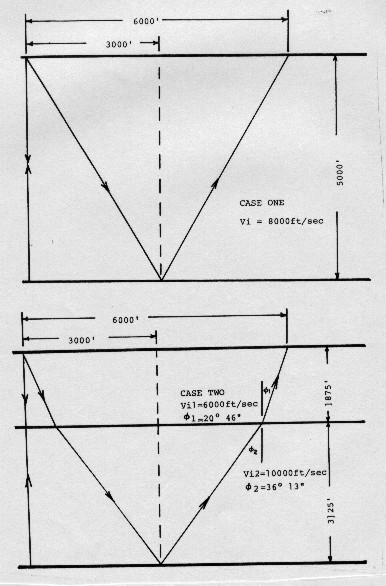|
 Calculating Interval
Velocity From
Seismic
Data
Calculating Interval
Velocity From
Seismic
Data
If we are interested in finding interval velocity from seismic
data, instead of from a sonic log, we must use equations that
represent the physics of the seismic recording process. Since
the geometry of the reflecting horizons is unknown, we must make
some assumptions that may later turn out to be untrue. The equations
work for both shear and compressional waves when the respective
two way times are used.
The
far trace time is:
1: Tx = To + NMO
Stacking
Velocity is:
2: Vstk = (X ^ 2 / (Tx ^ 2 - To ^ 2)) ^ 0.5
Based
on the geometry shown below, interval velocity between
any two points in the section is:
3: Vint = (((Vstk2 ^ 2) * T2 - (Vstk1 ^ 2) * T1) / (T2
- T1)) ^ 0.5
Interval thickness:
4: Hint = 0.5 * Vint * (T2 - T1)

Geometry for interval velocity calculation
The
apparent velocity, or stacking velocity (Vstk), is the velocity
which yields the exact NMO from the NMO equation. Therefore, it
could be derived from real seismic data with a T^2 - X^2 plot,
an NMO analysis, or a computer velocity analysis (CVA). It is
the only velocity which will yield the best stacked seismic section.
The
average velocity from a log analysis will yield very poor stacking
results unless the interval velocities are quite constant and
there is no dip on the reflections. The RMS velocity from log
analysis will yield adequate results, as long as dip is not extreme.
In horizontal bedding, we usually assume that Vstk from seismic
equals Vrms from log analysis. Thus NMO could be predicted from
well log data by using the appropriate arithmetic. Conversely,
stacking velocity can be transformed into interval velocity, which
will lead to correct time to depth conversion.
|

